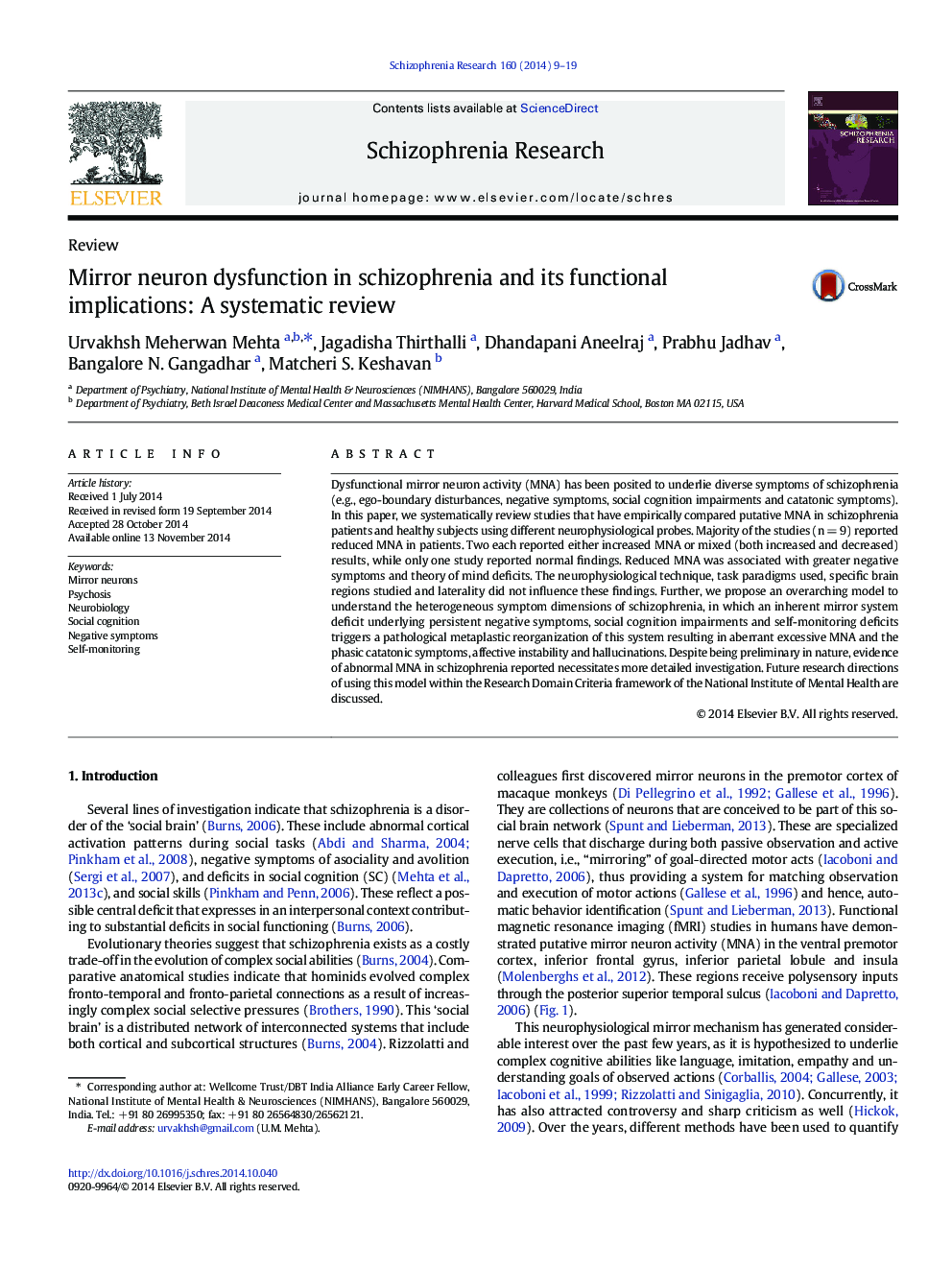| Article ID | Journal | Published Year | Pages | File Type |
|---|---|---|---|---|
| 6824401 | Schizophrenia Research | 2014 | 11 Pages |
Abstract
Dysfunctional mirror neuron activity (MNA) has been posited to underlie diverse symptoms of schizophrenia (e.g., ego-boundary disturbances, negative symptoms, social cognition impairments and catatonic symptoms). In this paper, we systematically review studies that have empirically compared putative MNA in schizophrenia patients and healthy subjects using different neurophysiological probes. Majority of the studies (n = 9) reported reduced MNA in patients. Two each reported either increased MNA or mixed (both increased and decreased) results, while only one study reported normal findings. Reduced MNA was associated with greater negative symptoms and theory of mind deficits. The neurophysiological technique, task paradigms used, specific brain regions studied and laterality did not influence these findings. Further, we propose an overarching model to understand the heterogeneous symptom dimensions of schizophrenia, in which an inherent mirror system deficit underlying persistent negative symptoms, social cognition impairments and self-monitoring deficits triggers a pathological metaplastic reorganization of this system resulting in aberrant excessive MNA and the phasic catatonic symptoms, affective instability and hallucinations. Despite being preliminary in nature, evidence of abnormal MNA in schizophrenia reported necessitates more detailed investigation. Future research directions of using this model within the Research Domain Criteria framework of the National Institute of Mental Health are discussed.
Related Topics
Life Sciences
Neuroscience
Behavioral Neuroscience
Authors
Urvakhsh Meherwan Mehta, Jagadisha Thirthalli, Dhandapani Aneelraj, Prabhu Jadhav, Bangalore N. Gangadhar, Matcheri S. Keshavan,
